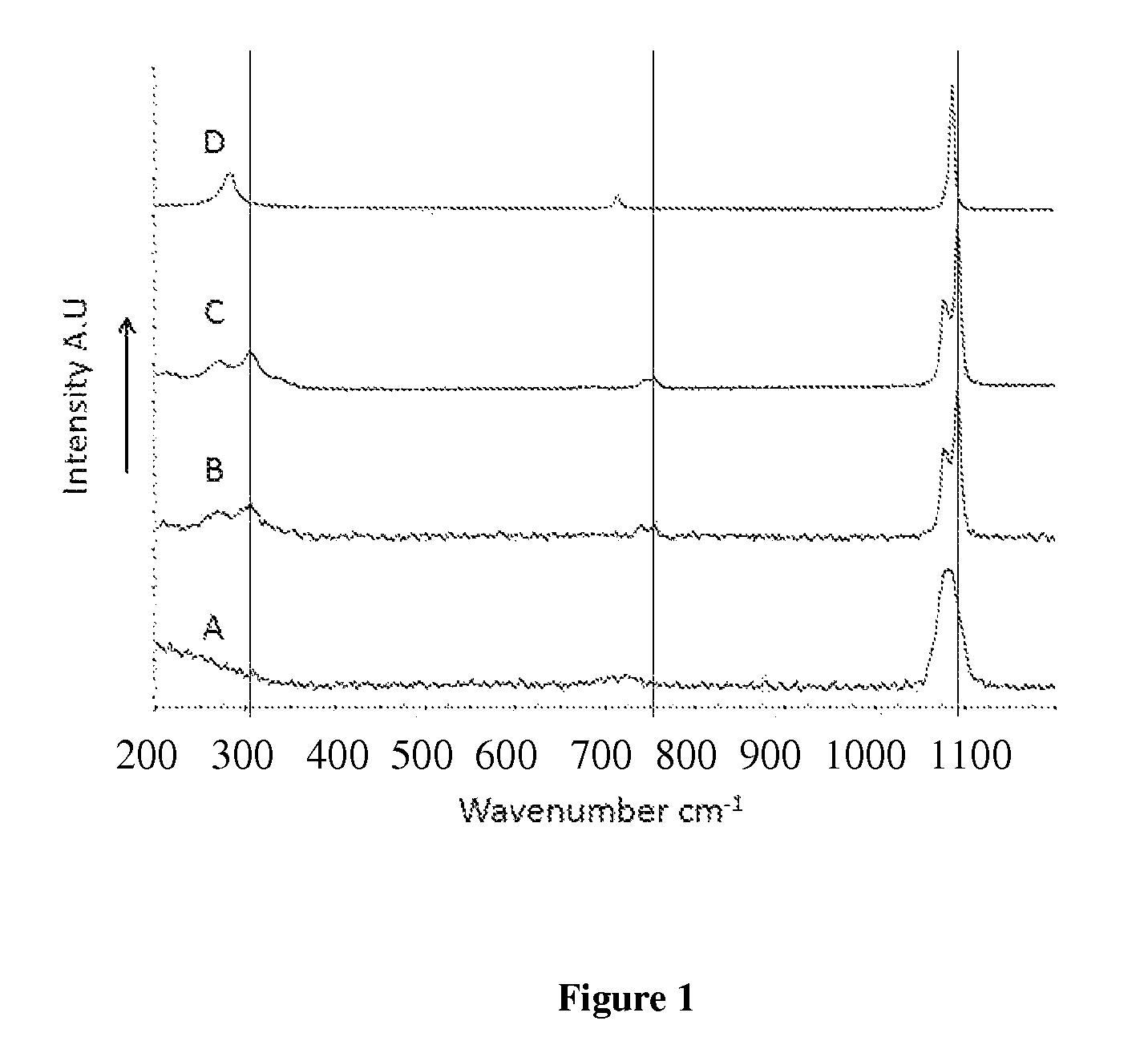Method for producing stabilized amorphous calcium carbonate
a technology of amorphous calcium carbonate and stabilized amorphous calcium carbonate, which is applied in the direction of non-fibrous pulp addition, papermaking, non-macromolecular adhesive additives, etc., can solve the problems of large-scale production that includes hundreds or even thousands of liters being mixed and separated using liquid-solid phase separation techniques such as filtration or centrifugation in less than two minutes, and achieves stable acc. , the effect of increasing stability
- Summary
- Abstract
- Description
- Claims
- Application Information
AI Technical Summary
Benefits of technology
Problems solved by technology
Method used
Image
Examples
example 1
[0069]In a typical procedure, the calcium solution contained 1 liter of water, 88.8 g of calcium chloride and 888 mg of phosphoserine. The carbonate solution contained 1 liter of water and 84.8 g of sodium carbonate. The stabilizing solution contained 200 ml of water and 1.776 g of phosphoserine and 350 ml of ethanol was used as the organic solvent. The calcium and carbonate solutions were mixed together to precipitate non-stabilized ACC, the stabilizer solution was added to the ACC suspension after 20 seconds followed by the ethanol creating stabilized ACC suspension. The resulting stabilized ACC suspension stabilized ACC for at least 3 hours in solution at ˜20° C. and for at least 9 hours at 0° C. The ACC was then filtered during the time it was still stable in suspension, using a Buchner funnel, and the filtered cake was dried using a regular oven at 40-50° C.
example 2
[0070]The calcium solution contained 1 liter of water, 88.8 g of calcium chloride and 700 mg of citric acid. The carbonate solution contained 1 liter of water and 84.8 g of sodium carbonate. The stabilizing solution contained 200 ml of water and 1.4 g of citric acid and 350 ml of ethanol was used as the organic solvent. The calcium and carbonate solutions were mixed together to precipitate non-stabilized ACC, the stabilizer solution was added to the ACC suspension after 20 seconds followed by the ethanol creating stabilized ACC suspension. The resulting stabilized ACC suspension stabilized ACC for at least 3 hours in solution at ˜20° C. and for at least 9 hours at 0° C. The ACC was then filtered during the time it was still stable in suspension, using a Buchner funnel, and the filtered cake was dried using a vacuum oven at 40-50° C., 400 mb under nitrogen atmosphere.
example 3
[0071]The calcium solution contained 1 liter of water, 88.8 g of calcium chloride and 888 mg of phosphothreonine. The carbonate solution contained 1 liter of water and 84.8 g of sodium carbonate. 1.776 g of citric acid was dissolved in 350 ml of ethanol. The calcium and carbonate solutions were mixed together to precipitate non stabilized ACC and the ethanol-stabilizer solution was added to the ACC suspension after 20 seconds creating a stabilized ACC suspension. The resulting stabilized ACC suspension stabilized ACC for at least 5 hours in solution at ˜20° C. and for at least 9 hours at 0° C. The ACC was then filtered during the time it was still stable in suspension, using a Buchner funnel, and the filtered cake was dried using a regular oven at 40-50° C.
PUM
| Property | Measurement | Unit |
|---|---|---|
| temperature | aaaaa | aaaaa |
| temperature | aaaaa | aaaaa |
| temperature | aaaaa | aaaaa |
Abstract
Description
Claims
Application Information
 Login to View More
Login to View More - R&D
- Intellectual Property
- Life Sciences
- Materials
- Tech Scout
- Unparalleled Data Quality
- Higher Quality Content
- 60% Fewer Hallucinations
Browse by: Latest US Patents, China's latest patents, Technical Efficacy Thesaurus, Application Domain, Technology Topic, Popular Technical Reports.
© 2025 PatSnap. All rights reserved.Legal|Privacy policy|Modern Slavery Act Transparency Statement|Sitemap|About US| Contact US: help@patsnap.com



